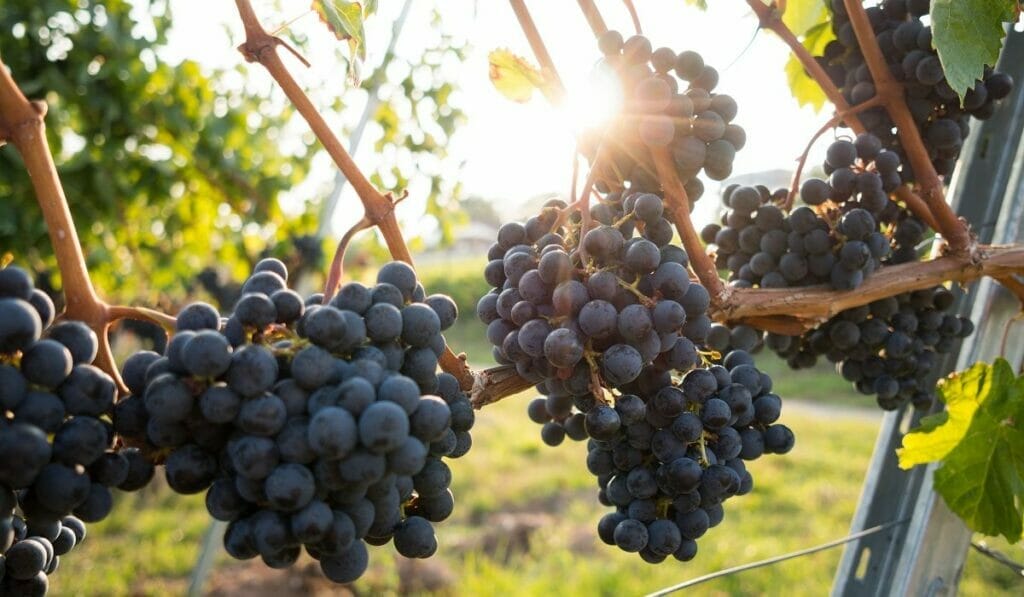The world is heating up. While rising sea levels and ice caps melting are a very real concern, we might be losing another pretty important thing: wine. Good wine to be exact. In Bordeaux, climate change has prompted the wine union (in French: Syndicat des vins AOC de Bordeaux & Bordeaux Superieur) to authorize seven new wine grapes — four reds and three whites — for the Bordeaux AOC and Bordeaux Superieur appellations.
Generally, the union has looked south for grapes for the new allowances. Out of the seven, Touriga Nacional would be most immediately recognizable. Portugal’s most famous grape does well in hotter climes, and has the potential for complex, full-bodied, and age-able wines that fit in with the framework of Bordeaux-style blends.
Another of the new grapes allowed is Marselan, a cross between Cabernet Sauvignon and Grenache that’s hardier than its parent varietals, and produces mid-bodied reds that also take well to ageing. Marselan is also popular in China, where it is responsible for a large number of award-winning labels.
Meanwhile, the other two reds are much less common: Arinarnoa, a Tannat-Cabernet Sauvignon crossbreed that has lower sugar levels and higher acidity that can compensate for faster ripening in hotter weather; and Castets, a Bordeaux grape that was largely forgotten until now.
The white varieties have also been chosen to compensate for impending temperature increases: Alvarinho (also known as Albarino in Spain, where it’s most famously grown in the Rias Baixas DO), Petit manseng, and Lilorila are all aromatic, high-acid, and hardier whites that can compensate for flavours diminished in hot weather.
A different liquid in your glass?
What does this all mean for the drinker and collector?
For one of the most tradition-bound wine regions in the world, it’s a move that really marks the looming threat of climate change. Even then, there are caveats: growers are only allowed to allocate up to 5 percent of their vineyards to these grapes, and blend only up to 10 percent for any bottling.
The new grapes are also only allowed in select parcels — prime real estate like St. Emillion and Paulliac still have to use the traditional varieties for now. These wines will still be made the same way, so the new ruling isn’t going to cause Bordeaux prices to skyrocket anytime soon.
In an interview with Drinks Today, winemaker Christophe Piat of Château Couronneau shares that this was only the first, small step forward, exclaiming, ‘‘We can’t keep making Merlot at 16 degrees. Anyone who works in international markets will say that…â€
Thankfully, the Bordelaise already have experience working with other, non-traditional grapes outside of France. Oneologist and wine educator Edwin Soon casts some light: “Ten percent is a very small amount of ‘new’ grapes — it will not change the style but instead is a fine-tuning tool and provide more flexibility to make better wine.
Over the last decade and more, many Bordeaux houses have been gaining a lot of experience with their investments in Argentina and working with adding Syrah, Malbec and other grape varieties to their ‘Bordeaux style’ blends produced in Argentina.â€
“Cabernet Sauvignon and Merlot will remain the kingsâ€, adds Mathias Camilleri, Master Sommelier and head somm of Ce La Vie.
New stories to tell
While the change isn’t monumental, it does present new opportunities — especially since Bordeaux has recently lost a little attention to its cooler, boho cousin Burgundy.
“I’m surprised that some of the grapes they picked weren’t French — like Touriga Nacional and Alvarinho, which are both from Portugal. As a sommelier though, it’d be a great way to start bringing back more interest to Bordeaux wines. There’ll be new styles for us to discover, and new stories and flavours to share with customers,†shares Camilleri.
“The wine will speak for itself. If consumers find that the wines are not to their taste, they will not buy them. If the wines are even better, they’ll buy more,†adds Soon.
Possible downsides
While the mood is generally optimistic regarding the new varieties, Soon also hopes that this inclusion does not become a crutch for “sloppy†growing and winemaking — especially since these new grapes are more forgiving.
Allowing more grape varieties from other parts of the world also poses another, less obvious downside: homogenisation. Soon explains, “The inclusion of new grapes, one of which is better identified with Portugal (Touriga Nacional) and another that’s known more as a cool-climate white grape of Spain (Albarino), does mean wine styles and grape varieties are less tied to regional identity…It’s like what happened to the car industry.
In the old days, you could easily identify a car’s origins by how it drove — whether it was American, Japanese, European etc. These days, cars are more similar than different, so it’s the badge of the car or its brand that has become an important aspect to its sales. I see the same happening to wine.â€



